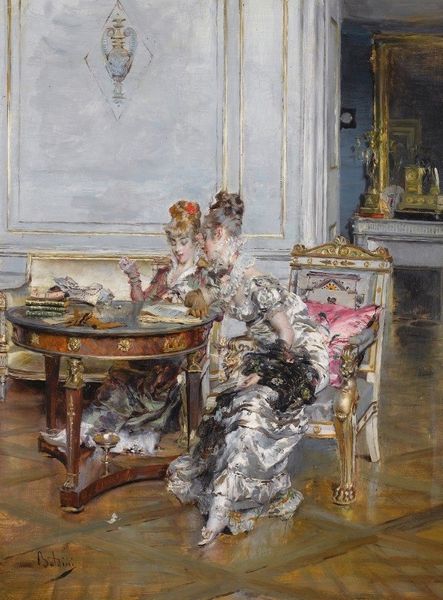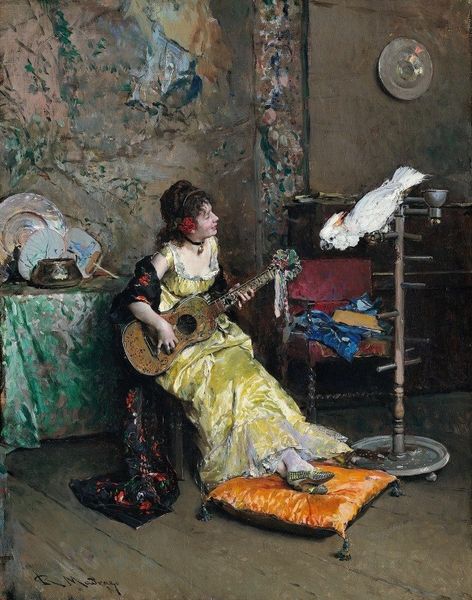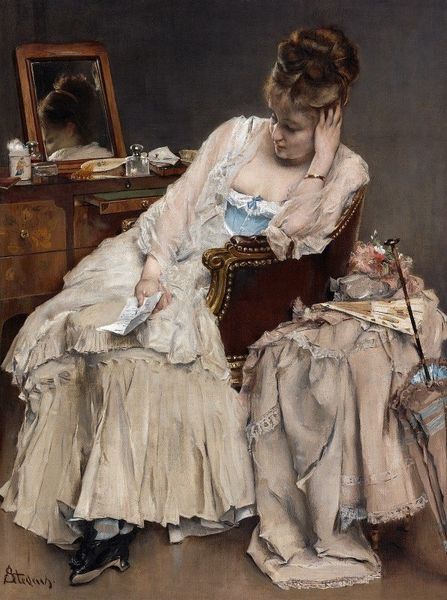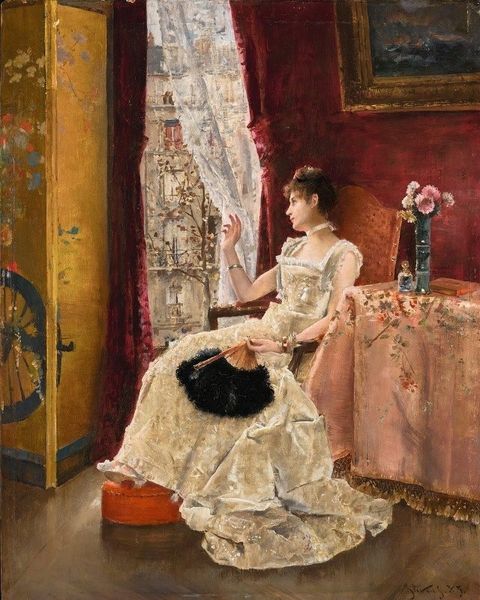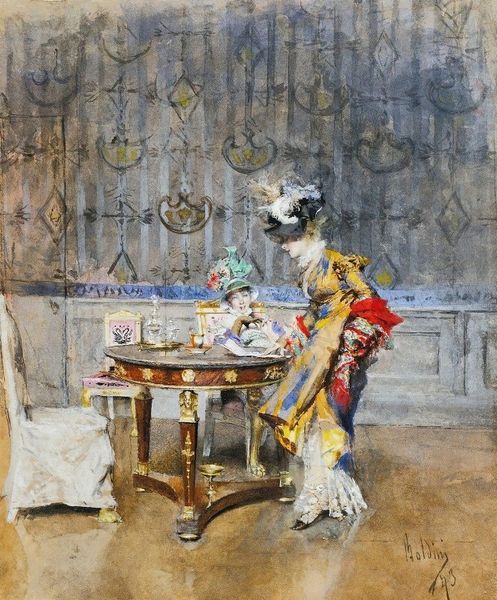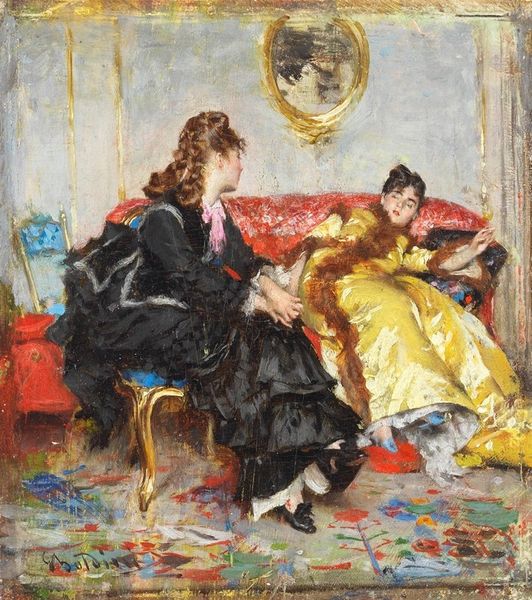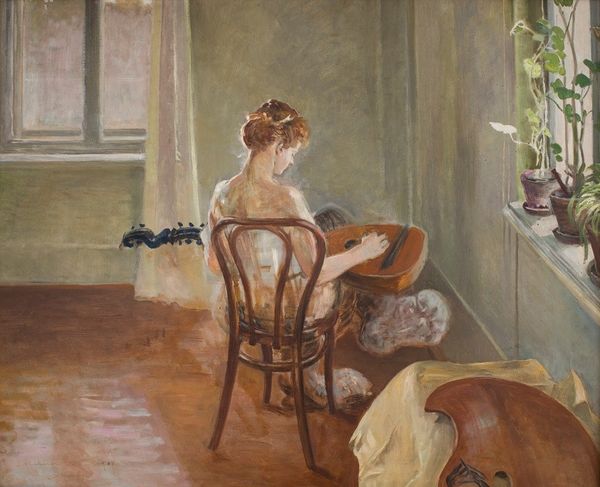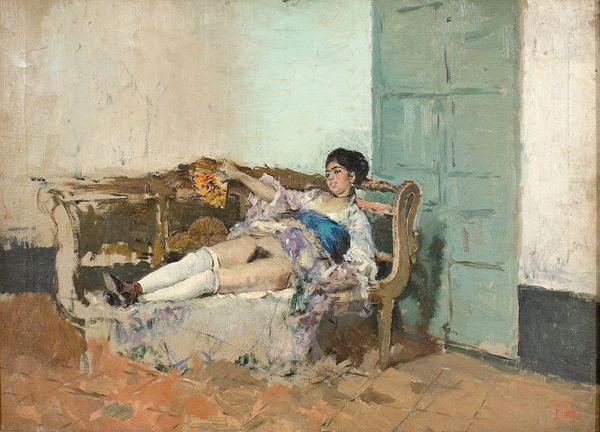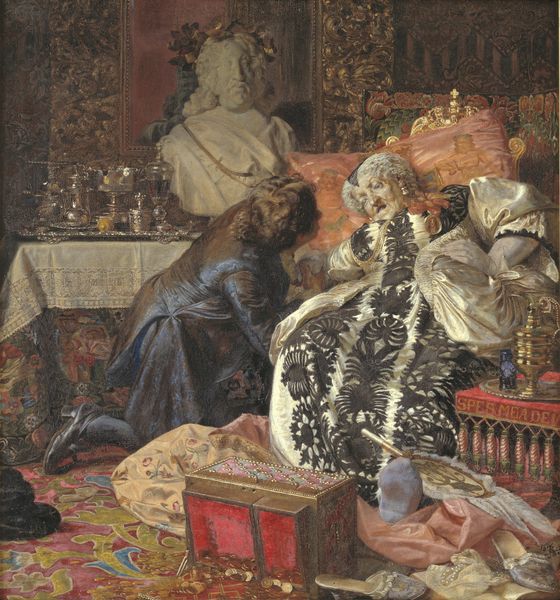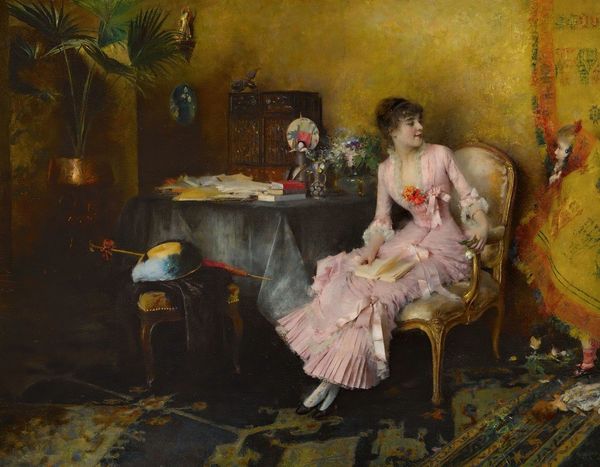
oil-paint
#
portrait
#
figurative
#
impressionism
#
oil-paint
#
figuration
#
oil painting
#
genre-painting
Copyright: Public Domain: Artvee
Editor: Here we have Giovanni Boldini’s "Young Woman Crocheting," created around 1875 using oil paints. It’s striking how intimate the scene feels, almost like a candid snapshot of domestic life, despite its formal composition. What's your interpretation of the social context represented here? Curator: It's tempting to see this as an idyllic scene, but the historical context pushes us to look closer at the implied social dynamics. We see an affluent domestic interior in late 19th century Europe; it represents not just leisure but a specific societal positioning. What do you make of the way Boldini depicts the two figures and their activities? Editor: Well, one woman is crocheting on a luxurious couch, while a child is working with thread on the floor, surrounded by vibrant, intricate designs. To me, it feels a little staged or performative. Curator: Precisely. How might the viewer at the time have perceived the “acceptable” roles of women and children within this structured, bourgeois setting? Consider how the performance of leisure and domestic skills was perceived then, especially considering this was made at the dawn of photography. Were images like these intended to idealize a particular lifestyle? Editor: That’s a fascinating angle. It almost suggests that the artist aimed to create a picture of the “ideal” feminine and childlike space, shaped by prescribed gender roles. And if that were not a “candid snapshot” it would further support your suggestion of idealization. Curator: Exactly. Boldini might be using a seemingly informal genre scene to reinforce social norms through art, something consumed and displayed by a privileged class. Did looking at it through this lens affect your initial impression? Editor: It does shift it, somewhat. I’m now less inclined to see simple domesticity and more inclined to see constructed societal roles on display. Thanks, I hadn't considered that previously. Curator: You're welcome. Art like this always opens avenues into examining the relationship between aesthetic expression and the forces shaping societal expectations.
Comments
No comments
Be the first to comment and join the conversation on the ultimate creative platform.
